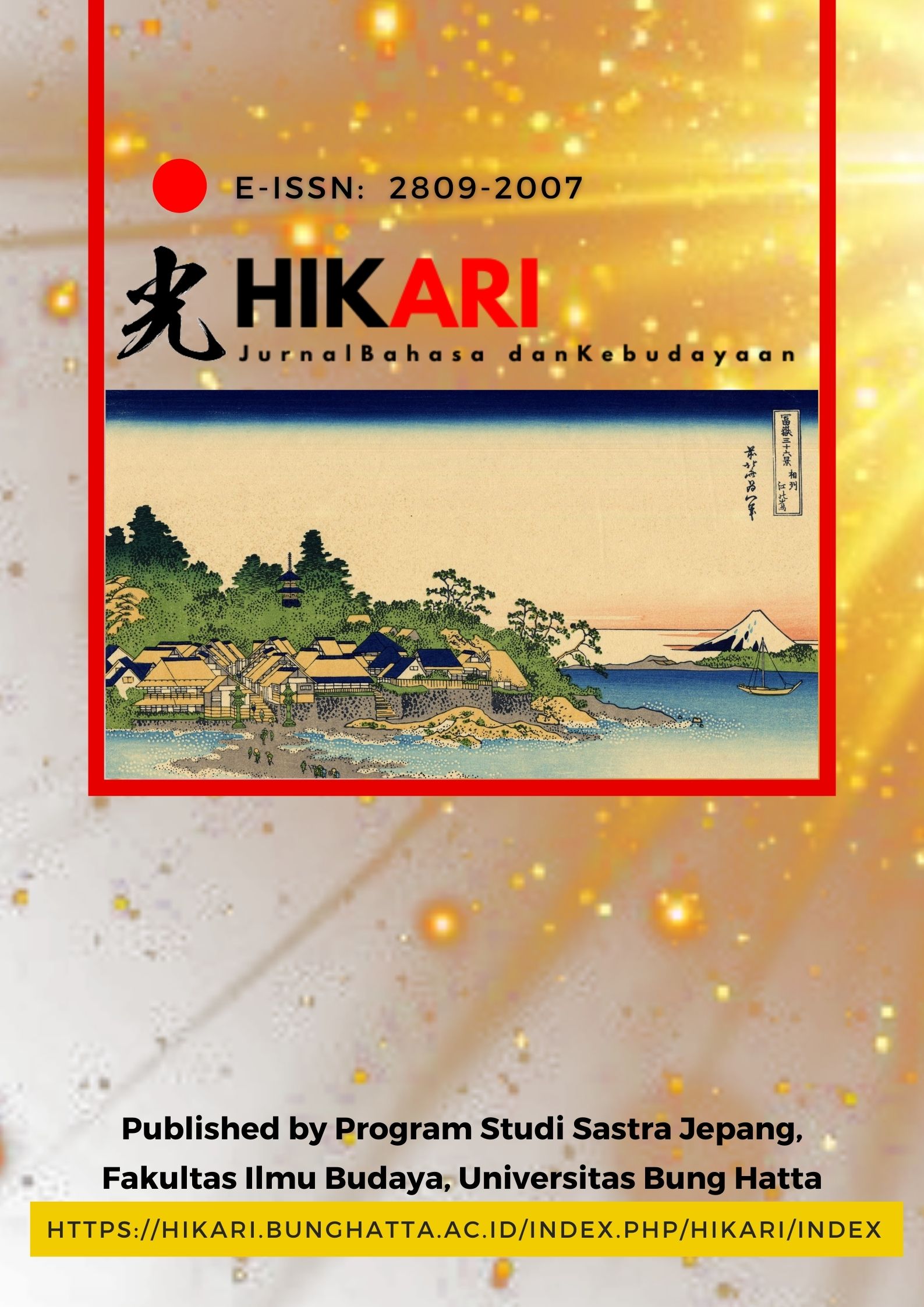SPEECH ACTIONS OF JAPANESE COMMANDS IN ANIME ASSASSINATION CLASSROOM
DOI:
https://doi.org/10.37301/hikari.v2i2.30Keywords:
Tindak tutur, Perintah, Anime JepangAbstract
The Japanese language cannot be separated from acting speech in communicating with people around it. Directive speech acts have various types, one of which is commands. The speech act of the command directive expresses the attitude of the speaker towards the actions that the speech opponent must take in order to perform the speaker's wishes. This study aims to describe the form and function of command directive speech acts contained in the assassination classroom anime film. The source of data in this study is the anime film Assassination Classroom. This type of research is qualitative research. The data collection methods and techniques in this study are listening methods and recording techniques and then analyzed using the agih method and the Direct Element Sharing (BUL) technique. The results of the study found that there were as many as 23 data as follows: the form ~te kudasai as many as 10 data with the function of commanding and shirking, the form of ~mashou as many as 5 data with the function of commanding, the form of ~youni as many as 3 data with the function of commanding.
References
Chaer, A. and Agustina, L. (2010) ‘Sosiolinguistik: Edisi Revisi’, Jakarta: Rineka Cipta [Preprint].
Darwis, A. (2019) ‘Tindak Tutur Guru Di Lingungan SMP Negeri 19 PALU?: Kajian Pragmatik’, Bahasa dan Sasta, 4(2), pp. 21–30.
Kartika, D. (2017) ‘Strategi Dan Penggunaan Modifikasi Dalam Kesantunan Tindak Tutur Memohon Oleh Mahasiswa Jepang Pada Program Bahasa Indonesia Penutur Asing (Bipa)’, Indonesian Language Education and Literature.
Nugraha, P.A. (2017) ‘Anime sebagai budaya populer (Studi pada komunitas anime di Yogyakarta).
Prayitno, H.J. (2011) Kesantunan sosiopragmatik: studi pemakaian tindak di kalangan Andik SD berbudaya Jawa. Muhammadiyah University Press, Universitas Muhammadiyah Surakarta.
Purba, A. (2011) ‘Tindak Tutur dan Peristiwa Tutur’, Pena: Jurnal Pendidikan Bahasa Dan Sastra.
Rokhman, F. (2020) Linguistik Disruptif: Pendekatan Kekinian Memahami Perkembangan Bahasa. Bumi Aksara.
Syahrial, S. (2019) ‘Personal Pronoun in Japanese Based on Gender (Structure and Semantic Study)’, Jurnal KATA.

Downloads
Published
Issue
Section
License
Copyright (c) 2023 Hikari: Jurnal Bahasa dan Kebudayaan

This work is licensed under a Creative Commons Attribution-ShareAlike 4.0 International License.





